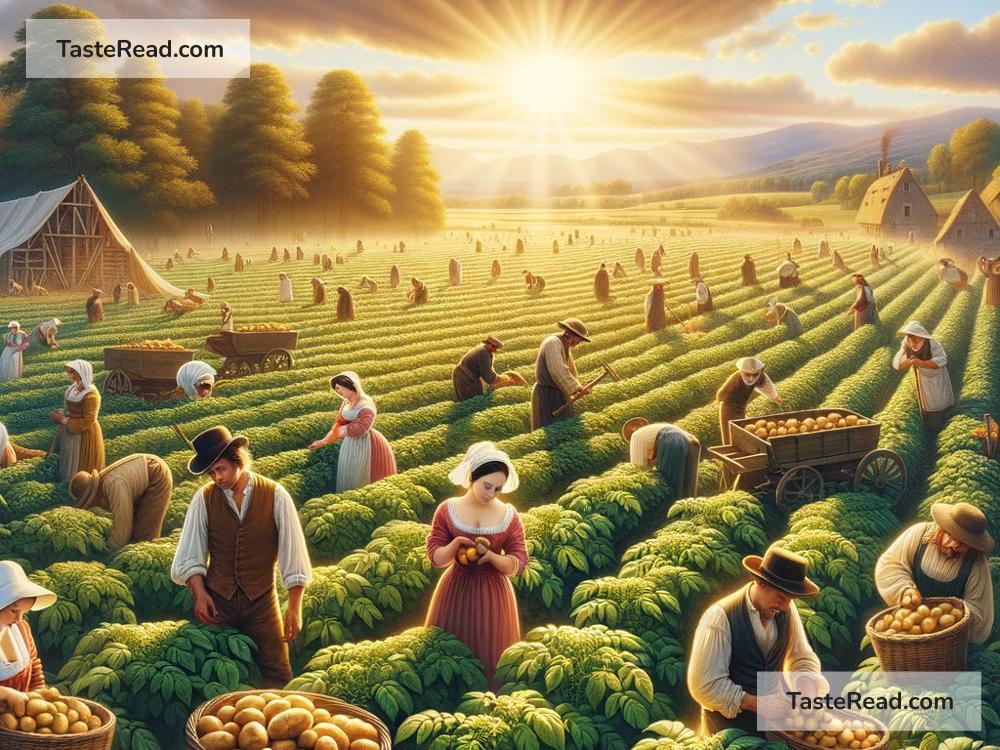How the Potato Saved Civilizations
The potato may seem like just another root vegetable found in your pantry, but this humble spud has played a monumental role in shaping human history. It’s not just a side dish on your dinner plate—it’s a superfood that has saved civilizations and helped build empires. Let’s explore how the potato changed the world in big ways, all while staying simple and easy to understand.
What Is a Potato?
Before getting into history, let’s cover the basics. A potato is a starchy tuber that comes from a type of plant called Solanum tuberosum. It grows underground and is native to the Andes Mountains in South America. Indigenous peoples like the Inca cultivated potatoes thousands of years ago, long before they made their way across the globe.
Potatoes come with a unique combination of traits that make them special:
- Easy to grow. They can survive in poor soil and cold climates where other crops might fail.
- Highly nutritious. Potatoes contain vitamins, minerals, and carbohydrates, making them a high-energy food.
- Versatile. You can boil them, bake them, fry them, mash them—the list goes on!
These features helped this small vegetable become a world-changing force.
Arrival in Europe and the Potato Revolution
The story of how potatoes became global starts with Spanish explorers in the 16th century. After conquering parts of South America, they brought potatoes back to Europe. At first, Europeans didn’t take the potato seriously—it wasn’t as flashy as wheat, which was the main crop at the time. Some people even thought potatoes were strange or dangerous. But over time, farmers realized the potato was special.
In the 18th century, potatoes became a game-changer for Europe. Why? Because Europe had a lot of food problems at the time. Famines were common, and many crops didn’t survive harsh conditions. But the potato was different: it grew well in tough soil and climates, and its high yields meant more people could be fed with less land.
Potatoes became especially important in places like Ireland, Germany, and Russia, where they helped reduce hunger and support growing populations. The introduction of this reliable, nutritious crop meant more people survived bad harvests and wars—things that usually caused societies to collapse.
Feeding Empires
As populations grew, nations built stronger economies and armies. Historians believe that potatoes helped fuel big changes like the Industrial Revolution. By the 18th and 19th centuries, European countries had more food security, thanks to the potato. This allowed workers to focus on industries, inventions, and urbanization rather than just farming to eat.
Napoleon Bonaparte, the famous French military leader, was so impressed by potatoes that he encouraged farmers to grow them during his campaigns. When his army needed food, potatoes kept them fed and strong.
Even though potatoes first helped Europe, their impact didn’t stop there. During the colonial era, European settlers took potatoes with them to places like North America, India, and China. Soon, potatoes were being grown all over the world, changing diets and economies everywhere they went.
The Potato Famine: A Warning
While potatoes saved civilizations in many ways, there was a dark chapter in their history: the Irish Potato Famine. Between 1845 and 1852, a disease called “potato blight” attacked Ireland’s potato crops. Since most Irish people depended on potatoes as their main source of food, the famine caused widespread hunger and death. Nearly a million people died, and another million emigrated to places like the United States to escape the disaster.
This tragic event taught a valuable lesson: diversity is important. Farmers learned that depending too heavily on one crop could lead to disaster. Today, agricultural scientists work on making potatoes even more resistant to diseases like blight so another famine doesn’t happen.
Potatoes Around the World Today
Fast forward to today. Potatoes are one of the world’s most important crops, second only to staples like wheat, rice, and corn. They’re grown on every continent except Antarctica, and people eat them in countless forms—fries, chips, soups, curries, and more. In places like Peru, where potatoes originated, there are over 4,000 different types of potatoes!
Countries and organizations are also using potatoes to fight hunger and poverty. For example, in developing nations, farmers can grow potatoes in challenging environments that might not be great for other crops. Potatoes provide calories, vitamins, and income for millions of people.
Why the Potato Matters
So, how did the potato save civilizations? By being dependable when times were tough. Whether it was helping Europeans avoid famine, fueling revolutions, or expanding global agriculture, potatoes have been there through history’s ups and downs. They’ve fed kings and commoners, soldiers and scientists, and entire nations.
Even today, the potato has lessons to teach us. It shows us the power of simple things—how something small and unassuming can change the world. Next time you see a potato, whether it’s mashed on your plate or fried into chips, take a moment to appreciate this humble hero of human history.
Who knew that such a tiny tuber could make such a big difference?


